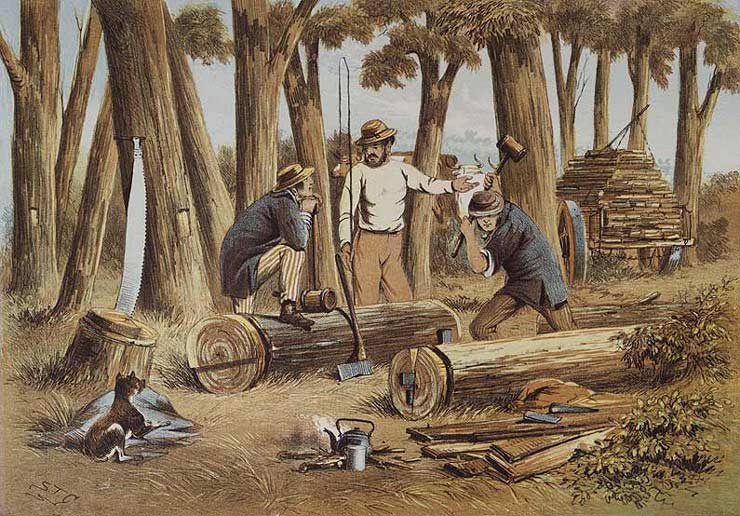 'Splitters', 1865
'Splitters', 1865
TLF ID R3381
This is a coloured print, measuring 19.4 cm x 25.2 cm, by the famous colonial artist Samuel Thomas Gill (1818-80), published in 'The Australian Sketchbook' in 1865. It shows two splitters cutting slabs from the felled trunk of a tree using wedges and mallets. A bullock dray stands nearby, stacked high with slabs, and the driver, with his stockwhip in his hand, is in conversation with the splitters. A long two-man saw and an axe can be seen beside the campfire. The artist's initials, 'STG', are inscribed in the bottom left-hand corner, and the title (not shown) appears below the print.
